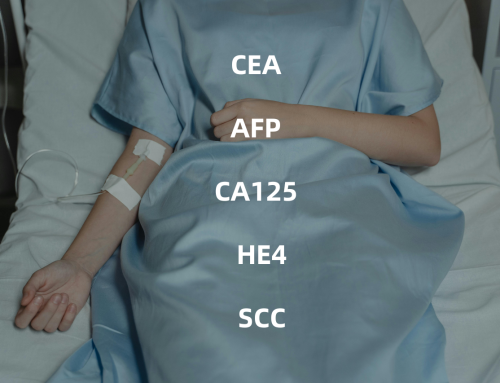Traditional HIV testing methods primarily rely on antibody detection, and these methods have certain limitations. Firstly, traditional testing methods have a longer window period during which HIV antibodies cannot be accurately detected shortly after infection. Secondly, the accuracy of traditional methods can be influenced by the time of antibody production and variations in individual immune systems. Additionally, traditional testing methods typically require laboratory settings, professional personnel to operate, incur higher costs, and yield results after a waiting period. The 4th generation HIV rapid test kit not only detects the HIV virus itself but also identifies antibodies produced by the body in response to HIV infection, thus providing more accurate and comprehensive test results. The emergence of this new testing method brings new hope and opportunities, offering better protection for individual and public health.

In this article, we will explore the reasons behind the popularity of the 4th generation HIV test. We will analyze the principles, accuracy, speed, convenience, and the advantage of a shortened window period in the 4th generation HIV testing. This will provide a better understanding of why the 4th generation HIV test has gained significant attention in HIV prevention and control efforts. By delving deeper into the advantages of the 4th generation HIV testing, we can more effectively address the challenges of HIV transmission and infection, contributing further to public health.
Overview of the HIV Virus
What is HIV?
HIV (Human Immunodeficiency Virus) is a virus that causes AIDS (Acquired Immunodeficiency Syndrome). It attacks the human immune system and weakens its functions, making individuals more susceptible to infections and diseases. HIV belongs to the retrovirus family, with its genetic material being RNA. However, it can undergo a process called reverse transcription to transcribe its RNA into DNA, which then integrates into the host cell’s genome.

Classification and Subtypes
- HIV-1: This is the most common and highly pathogenic subtype, with the largest number of infections worldwide. HIV-1 can be further divided into several distinct subtypes, such as M, N, O, and P. Subtype M is the most widely spread subtype and is responsible for the majority of AIDS cases.
- HIV-2: This subtype is relatively less common and is primarily prevalent in West Africa. Compared to HIV-1, HIV-2 has a slower transmission rate, and individuals infected with HIV-2 typically have a longer and milder progression of the disease.
Routes of Virus Transmission
- Bloodborne Transmission: Primarily occurs through sharing of needles, syringes, or other injection equipment, as well as through blood transfusion or blood products. It also includes blood exposure during injuries or surgical procedures.
- Sexual Transmission: Mainly occurs through sexual intercourse, including anal, vaginal, and oral sex.
- Mother-to-Child Transmission: When a pregnant woman is infected with HIV, the virus can be transmitted to the baby during pregnancy, childbirth, or breastfeeding.

Global HIV Infection Situation
HIV infection is a global public health issue, with variations in the infection rates across different regions and countries. On July 13, 2023, the Joint United Nations Programme on HIV/AIDS (UNAIDS) released the latest “2023 Global HIV/AIDS Progress Report – The Path to Ending AIDS” in Geneva, Switzerland. The report reveals that there are currently 39 million people living with HIV globally, out of which 29.8 million are receiving antiretroviral therapy. In 2022, there were 1.3 million new HIV infections, and 630,000 people died from AIDS-related illnesses. Countries and regions worldwide are making efforts to implement prevention, treatment, and support measures to reduce the spread of HIV infection and its impact on individual health.
What is an HIV 4th Generation Rapid Test Kit?
The HIV 4th Generation Rapid Test Kit is a novel HIV testing method based on immunological principles. It combines HIV antigen detection and antibody detection methods, allowing for the simultaneous testing of both the HIV virus and the antibodies produced by the body in response to HIV infection.
This testing method is primarily achieved through two key steps: antigen detection and antibody detection.
Firstly, the HIV 4th Generation Rapid Test Kit detects HIV antigens in a blood sample, which are substances produced by the HIV virus itself. The presence of HIV antigens in the sample indicates the presence of the HIV virus in the individual.
Secondly, the test also detects HIV antibodies in the blood sample, which are produced as an immune response to HIV infection. The presence of HIV antibodies indicates that the individual’s immune system has reacted to HIV exposure.
By simultaneously detecting both HIV antigens and antibodies, the HIV 4th Generation Rapid Test Kit provides more comprehensive and accurate testing results, aiding in the early detection of HIV infection and enabling timely treatment and prevention measures. In comparison to traditional HIV testing methods, the HIV 4th Generation Rapid Test Kit has several differences and advantages:
- Accuracy: The HIV 4th Generation Rapid Test Kit can simultaneously detect HIV antigens and antibodies, offering more comprehensive and accurate testing results. Traditional HIV testing methods often only detect antibodies and may yield false negative results during the early stages of infection.
- Early Detection: The HIV 4th Generation Rapid Test Kit can perform testing in the early stages of infection, increasing the chances of early HIV detection. Traditional HIV testing methods typically require a waiting period before accurate testing can be conducted.
- Ease of Use: The HIV 4th Generation Rapid Test Kit is relatively simple to use and can be performed at home. Traditional HIV testing methods often require visiting a healthcare facility or laboratory for testing.
- Rapid Results: The HIV 4th Generation Rapid Test Kit usually provides results within a short timeframe, ranging from a few minutes to half an hour. Traditional HIV testing methods might require waiting several days or longer for results.
A study published in “The Lancet Infectious Diseases” highlighted that the sensitivity of the HIV 4th Generation Rapid Test Kit in detecting early infections exceeded 95%, with a specificity of over 99%. Additionally, a study conducted in China demonstrated that the accuracy of the HIV 4th Generation Rapid Test Kit in clinical applications is comparable to traditional HIV testing methods, indicating high reliability and accuracy.
In summary, the HIV 4th Generation Rapid Test Kit, through its combined antigen and antibody testing, offers a more accurate, earlier, and convenient method for HIV testing. These advantages position the HIV 4th Generation Rapid Test Kit as a crucial tool in modern HIV testing.
Recommended Raw Materials and Uncut Sheet for HIV 4th Generation Test Kits:
Lateral Flow Assay Uncut Sheet

Main Diagnostic Reagents for HIV 4th Generation Testing







